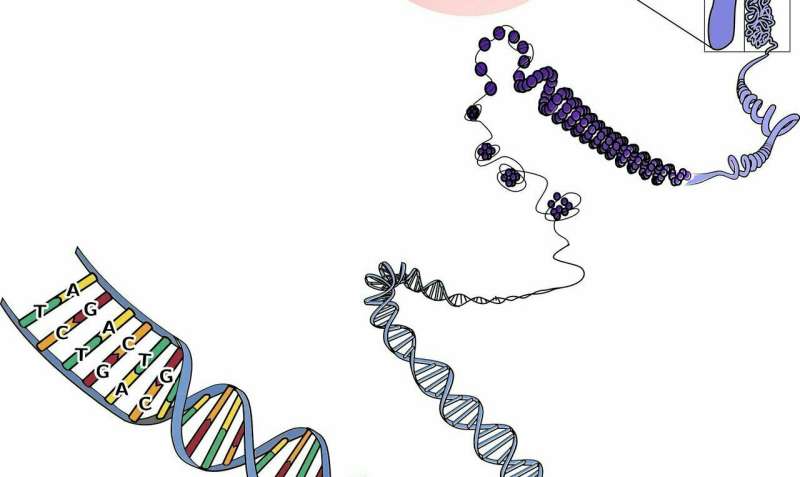RNA repair shows promise in reversing mutations underlying a neurological disorder

Scientists successfully edited RNA in a living animal in such a way that the repaired RNA then corrected a mutation in a protein that gives rise to a debilitating neurological disorder in people known as Rett syndrome.
The advance by researchers at Oregon Health & Science University publishes in the journal Cell Reports.
"This is the first example of using programmable RNA editing to repair a gene in mouse models of a neurological disease," said senior author Gail Mandel, Ph.D., senior scientist in the OHSU Vollum Institute. "This gives us an approach that has some traction."
Rett syndrome is a debilitating neurological disorder caused by mutations in the gene that codes the protein MeCP2. The disease occurs almost exclusively in girls, affecting an estimated 1 in 10,000 live births, due to the fact that it's located on the X chromosome.
Mandel and co-authors, led by postdoctoral fellow John Sinnamon, Ph.D., have been focused on engineering a way to repair the mutated MeCP2 protein at the level of RNA, or ribonucleic acid, which acts as a messenger that carries instructions from DNA to control the synthesis of proteins.
Other scientists have used the programmable RNA editing repair technique to target muscular dystrophy and even hearing loss in genetically engineered mice.
However, this is the first demonstration that the technique holds promise in neurological disorders rooted in genetic mutations spread across thousands of different cell types in the brain. The nervous system poses more challenges for this technique than diseases of other organs, such as muscle or liver, which have much less cellular heterogeneity.
The new study targeted and repaired the MeCP2 protein across a variety of cell types, a scientific first.
"We repaired the MeCP2 protein in three different distinct populations of neurons," Mandel said. "So it's possible that it would work throughout the brain, assuming we can deliver the editing components in a widespread manner."
Previous landmark research led by Adrian Bird, Ph.D., with the University of Edinburgh revealed it was possible to reverse Rett-like symptoms in mice, suggesting it may be possible in people, too.
"For that reason, Rett syndrome is an ideal test case for this technique," Mandel said.
While the OHSU research shows that RNA repair holds promise as a proof of concept, Mandel emphasized that much more research needs to be done to test whether it reverses Rett-like behaviors in mice, and to improve the efficiency and specificity of the repair.
More information: John R. Sinnamon et al, In Vivo Repair of a Protein Underlying a Neurological Disorder by Programmable RNA Editing, Cell Reports (2020). DOI: 10.1016/j.celrep.2020.107878













